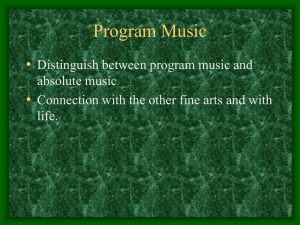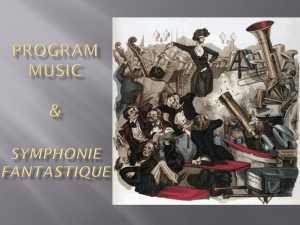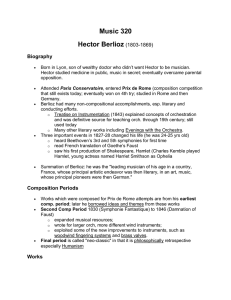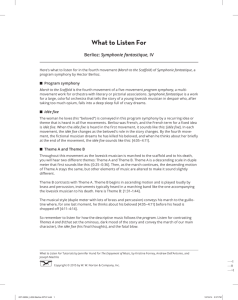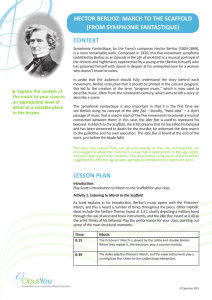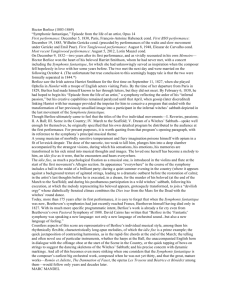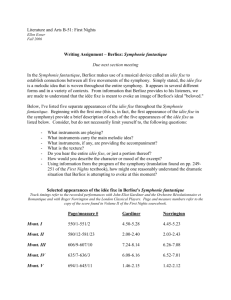Symphonie Fantastique Big Issues
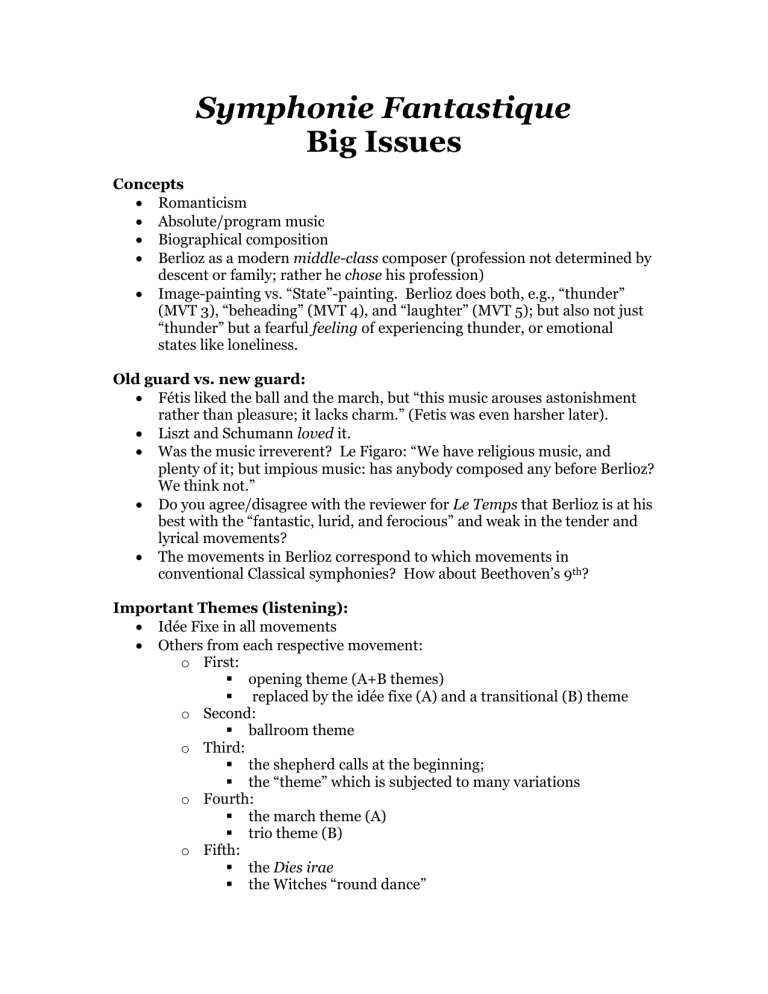
Symphonie Fantastique
Big Issues
Concepts
Romanticism
Absolute/program music
Biographical composition
Berlioz as a modern middle-class composer (profession not determined by descent or family; rather he chose his profession)
Image-painting vs. “State”-painting. Berlioz does both, e.g., “thunder”
(MVT 3), “beheading” (MVT 4), and “laughter” (MVT 5); but also not just
“thunder” but a fearful feeling of experiencing thunder, or emotional states like loneliness.
Old guard vs. new guard:
Fétis liked the ball and the march, but “this music arouses astonishment rather than pleasure; it lacks charm.” (Fetis was even harsher later).
Liszt and Schumann loved it.
Was the music irreverent? Le Figaro: “We have religious music, and plenty of it; but impious music: has anybody composed any before Berlioz?
We think not.”
Do you agree/disagree with the reviewer for Le Temps that Berlioz is at his best with the “fantastic, lurid, and ferocious” and weak in the tender and lyrical movements?
The movements in Berlioz correspond to which movements in conventional Classical symphonies? How about Beethoven’s 9 th ?
Important Themes (listening):
Idée Fixe in all movements
Others from each respective movement: o First:
opening theme (A+B themes)
replaced by the idée fixe (A) and a transitional (B) theme o Second:
ballroom theme o Third:
the shepherd calls at the beginning;
the “theme” which is subjected to many variations o Fourth:
the march theme (A)
trio theme (B) o Fifth:
the Dies irae
the Witches “round dance”
